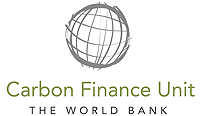Overview
The project sites are located in the headwater areas of Pearl River, the third longest river in China, in Guangxi Zhuang Autonomous Region. Due to the high precipitation, frequent storms, complex landform and steep valleys, as well as continual human disturbance (fire, grazing and cultivation) and poor land management, the area has been subjected to severe vegetation degradation and soil erosion. In the project areas, about 80% of local residents are ethnic minorities, including Zhuang, Miao, Yao, Yi and Buyi ethnic nationalities. The project counties are provincial-level poverty counties with many local people living below the poverty level. There are over 6,000 flora species in Guangxi, the third highest of all provinces in China. This includes 113 rare and endangered plant species, ranking it second among the 30 provinces and autonomous regions of China. 166 species of mammals have been recorded there, ranking it sixth among China’s provinces. Of these, 26 species are categorized as protected species. More than 310 bird species have been also recorded, of which, 49 are nationally protected species. The project area is considered one of the key biodiversity areas in Guangxi.
The Guangxi II Reforestation on Degraded Land A/R Clean Development Mechanism (CDM) project activity has established 8671.3 ha of multiple-purposes forests on degraded lands in Longlin, Tianlin and Lingyun Counties of Guangxi Zhuang Autonomous Region in China. Major species and reforestation models included 1185.1 ha of masson pine (Pinus massoniana), 863.2 ha of Chinese fir (Cunninghamia lanceolata), 3112.1ha of Shiny-bark birch (Betula luminifera), 121.4 ha of Choerospondias axillaries, 929ha of masson pine and Schima (Schima wallichii) mix forest, 408.7 ha of masson pine and Sweetgum (Liquidambar formosana) mixed forest, 1403.5 ha of eucalyptus and 648.3 ha of Flous (Taiwania flous). The A/R Clean Development Mechanism (CDM) project activity has been expected to produce 1,746,158 tCO2-e of tCERs at an annual average of 87,308 tCO2-e over the first 20-year crediting period starting in 2008.
Benefits
This A/R Clean Development Mechanism (CDM) project activity has contributed to poverty alleviation and environment improvement (biodiversity conservation and soil erosion control), thus has contributed to sustainable development. Specifically, it:
- Has controlled soil and water erosion and land degradation in the selected project areas;
- Has enhanced biodiversity conservation by increasing forest cover and nature habitat connectivity;
- Has generated income for the local farmers and promote the local community development.
